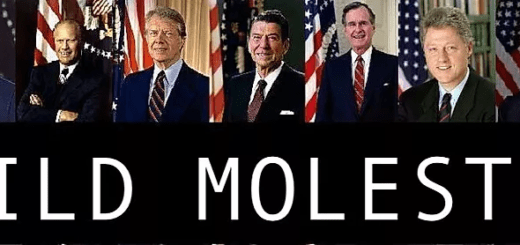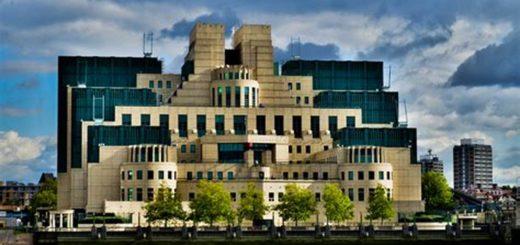Phoney Opposition: The Truth About the BRICS
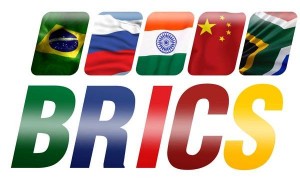 via Devon Douglas-Bowers hamptoninstitution.org
via Devon Douglas-Bowers hamptoninstitution.org
This is a transcript of a recent email interview conducted between Devon Douglas-Brewers and independent journalist James Corbett, where they discuss BRICS, the view that many have of the organization as a resistance force and the truth behind that. The conversation ends with how we can fight back against the powers that be in our own way.
DEVON DOUGLAS-BOWERS: What are BRICS (An international financial alliance involving Brazil, Russia, India, China, and South Africa) and the Asian Infrastructure Investment Bank (AAIB) really about? Many people argue that it is these countries challenging the dominate US-based system. How is that true or not true in some respects?
JAMES CORBETT: Who is contending that the AIIB or the BRICS’ New Development Bank is in any way competitive with the Bretton Woods institutions (IMF/World Bank)? Certainly not anyone involved with any of these institutions.
In March, IMF chief Christine Lagarde pledged IMF cooperation with the AIIB.
In June, World Bank chief Jim Yong Kim issued a statement congratulating the AIIB on its formation and calling it an “important new partner” for the Washington-led development bank.
In July, NDB [New Development Bank] President K.V. Kamath returned the favor, conceding that the NDB and the IMF/World Bank are complementary institutions, not rivals.
Also in July, the AIIB and the World Bank signed an actual cooperation agreement, promising to identify projects for joint financing later this fall.
No, these institutions do not view themselves as competitive. It is only various media pundits who have speculated that these new banks are in fact some sort of challenge to the so-called “Washington consensus.” What none of these experts has bothered to report (for obvious reasons) is the remarkable fact that the Vice President of the NDB is also an Executive Board member of the IMF, who then went on to pledge cooperation and joint actionbetween the NDB and IMF. Also missing from this narrative is the fact that the NDB’s chief, Kundapur Vaman Kamath, is a former staffer of the supposed NDB “rival” Asia Development Bank. Or there’s Jin Liqun, widely tipped to be the head of the AIIB, who also happens to be a former Vice President of the Asia Development Bank and alternative Executive Director of the World Bank.
In fact, the only sign that these Beijing-backed development banks pose any challenge to the existing order whatsoever is that the NDB has already confirmed that their first loan will be denominated in yuan, not dollars, and the AIIB is considering a basket of currencies, including the yuan.
But even this is not as much of a challenge to the Bretton Woods institutions as it appears on first glance. Although Beijing is obviously seeking to bolster the yuan as an international settlement currency, this is not being done in an effort to make the yuan itself a world reserve currency in the same way that the dollar is today. Instead, this is being done in service of a policy goal outlined by People’s Bank of China Governor Zhou Xiaochuan in 2009 that is seeking to establish the “Special Drawing Rights” currency basket as the new world reserve currency.
China’s goal is to have the yuan included in the SDR basket along with the dollar, yen, euro and pound. But the SDR itself is issued and administered by the IMF so once again we see that Beijing is not seeking to undermine these US-led hegemonic institutions at all, merely to increase their status and clout within these institutions
DEVON DOUGLAS-BOWERS: Are there any cracks in BRICS, as in problems and disputes between member nations?
JAMES CORBETT: It would almost be better to ask if there are any points of accord between the BRICS nations other than occasional alignment of bilateral trade or security goals.
The idea that there is any such thing as a shared BRICS economic, military or foreign policy is part of the fundamental fraud of the “BRICS” idea itself. The truth is that the BRICS (formerly “BRIC”) are not a coherent or organic grouping of like-minded states at all, but an arbitrary grouping of economies first identified by Goldman Sachs as emerging economies who were all expected to outperform the developed world in the coming decades. It was the BRIC countries that took this Goldman Sachs concept and attempted to make it into a real-world political reality, and the ploy becomes even more obvious when one realizes that the “S” (South Africa) was added not for any rational economic or political reason, but primarily to give the organization a footing in another continent.
China and India were at war in 1962 and have suffered through decades of tense relations. Even as late as 2006 Indian parliamentarians were openly urging a harder line on ongoing border disputes between the two countries and border issues continue to this very day, with a tense military standoff in the disputed border region occurring last year, over a decade after the BRIC’s inception.
China and Russia likewise share their traditional rivalries. Ever since the Sino-Soviet split in 1960, the two countries have been famously distrustful of each other. They have competing security and economic interests in places like Central Asia, where Putin is trying to construct his Eurasian Economic Union and Xi is attempting to solidify his New Silk Road. The fact that China, the world’s largest energy importer, and Russia, the world’s largest natural gas exporter, have only just now completed a pipeline agreement shows the degree to which their warming economic relations are a matter of political expediency, not mutual trust.
Brazil has enjoyed a close trading relationship with China in recent years, but even so Brazil has joined fellow BRICS member India in openly criticizing Beijing for its foot-dragging on yuan appreciation.
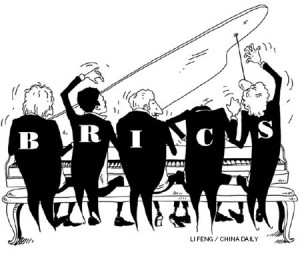 Brazil, India and South Africa have attempted to create closer relations in recent years through mechanisms like the IBSA Dialogue as part of the “South-South Policy,” but the very fact that they are seeking to expand cooperation through alternative dialogues and fora show the ineffectiveness of the BRICS to address these issues within the BRICS framework.
Brazil, India and South Africa have attempted to create closer relations in recent years through mechanisms like the IBSA Dialogue as part of the “South-South Policy,” but the very fact that they are seeking to expand cooperation through alternative dialogues and fora show the ineffectiveness of the BRICS to address these issues within the BRICS framework.
The BRICS are an artificial creation of a US investment bank, and the glacial pace at which the organization moves and the constant internal jockeying for status and position (see deliberations over where to locate the NDB for example) show that it is little more than an afterthought in these countries’ economic and foreign policies.
DEVON DOUGLAS-BOWERS: Are there any ways in which the interests of countries like Russia and China align with the interests of the US? What do you make of this cooperation on one front, while they disagree and fight on another front?
JAMES CORBETT: I think the problem with thinking of international relations this way is that it presupposes that the people in positions of political power and financial influence are interested in vague concepts of “national interest” rather than in the preservation and expansion of their own power and influence and that of their colleagues and associates.
As insiders like David Rothkopf and others have shown in recent years, there is a “Superclass” of several thousand individuals in positions of influence who have the ability to act trans-nationally, and who actively do so in the pursuit of their own international relation and economic policy goals. Seen from within this framework, a billionaire financier from one country with global assets to protect has demonstrably more in common with a billionaire financier from another country with global assets to protect than he does a poor manual laborer from his own country.
Consequently, global political and economic relations are more fruitfully seen as a mish-mash of sometimes rivalrous, sometimes complementary interests of various multinational banks and corporations and the various think tanks and international institutions they control. Although there may be greater points of accord and room for cooperation between elite oligarchs who share a language, history, culture or geographical location, it by no means rules out cooperation with others, even in countries that are nominally suffering through poor relations.
 Thus, what does it even mean to ask whether the interests of “Russia” and “China” align with the interests of the “US”? Surely these nation-state entities do not have interests in and of themselves. The people in positions of power in those countries have interests, but we would be better served in narrowing the scope of the question by identifying them in particular. Do the interests of Gazprom and Rosneft align with the interests of BP or Royal Dutch Shell? Sometimes, in certain contexts, yes. In other contexts they would be rivals.
Thus, what does it even mean to ask whether the interests of “Russia” and “China” align with the interests of the “US”? Surely these nation-state entities do not have interests in and of themselves. The people in positions of power in those countries have interests, but we would be better served in narrowing the scope of the question by identifying them in particular. Do the interests of Gazprom and Rosneft align with the interests of BP or Royal Dutch Shell? Sometimes, in certain contexts, yes. In other contexts they would be rivals.
Similarly with JPMorgan and HSBC and the Bank of China, or the various central bankers at the Bank for International Settlements, or the members of the Trilateral Commission. Their deliberations have very little to do with amorphous national interests and everything to do with jockeying for personal position and control of the global economic and political chessboard.
DEVON DOUGLAS-BOWERS: Why do you think that people buy into this narrative that countries like Russia and China are a ‘resistance’ force?
JAMES CORBETT: We have been conditioned our entire lives to expect that anything that opposes a demonstrably evil entity must itself be good. Whether it be the Star Wars Rebel Alliance fighting the Galactic Empire or the heroic Allies fighting the villanous Axis or even the more nuanced case of a valiant Serpico fighting the corruption within his own NYPD, we are almost invariably given narratives with identifiable “good guys” fighting risible “bad guys.”
But when it comes to the machinations of global geopolitics, this is completely the wrong lens through which to understand what is happening. Much more to the point would be the metaphor of rival gangs competing for territory. It is not the case that the Bloods are the “good guys” and the Crips the “bad guys” or vice versa; they are both criminal networks that use brutality and violence to enforce their control over given areas and to terrorize others.
Similarly, if we understand that rivalries between various international organizations (to the extent that they exist at all) are really only battles between gangsters for control over the global turf, we can more clearly understand that it is not a question of choosing sides in the struggle, but opposing the very ideologies of centralized, hierarchical control that make these institutions possible.
DEVON DOUGLAS-BOWERS: Talk about the history of China and the US, specifically with regards to how the build-up of the Chinese economy is due to, at least in part, the involvement of US companies.
JAMES CORBETT: The modern era of Sino-American relations famously began with Henry Kissinger’s secret trip to China in 1971 that paved the way for Nixon’s own trip and the renormalization of relations between the two countries. But even that narrative is grossly misleading. It neglects, for example, that Kissinger was a protege of David Rockefeller, whose family had been intimately involved in China since the early part of the 20th century and who “supported” Kissinger’s China initiative, which later resulted in his Chase bank becoming the first US correspondent bank of the National Bank of China.
Regardless, Kissinger’s efforts blended seamlessly into subsequent National Security Advisor Zbigniew Brzezinski’s (also, not coincidentally, a Rockefeller protege and co-founder with David of the Trilateral Commission), and by the end of the decade the death of Mao and rise of Deng Xiaoping created the condition for the “Red Capitalism” that has led to the rise of modern China. This process was overseen by a small cadre of politically connected individuals (known in Chinese as the “Eight Immortals“) whose families still continue to control vast portions of China’s “national” wealth.
These “capitalist road” reforms created the conditions for massive foreign investment in the country, which began in the 1980s with the establishment of the Beijing Central Business District and the formation of Chinese subsidiaries of major Fortune 500 companies like HP. This influx of foreign capital increased in the 1990s when direct investment of US-based multinationals in China quadrupled (from $2.6 billion in 1994 to $10.5 billion in 2001).
 |
| Source Data: Excel file |
During this period, China became a cheap labor pool for American corporations looking to outsource manufacturing during an era of easing regulations and even direct incentives to move American jobs offshore. According to the US government’s own reports, China’s open door came with a price: “forced” technology transfers that allowed China to leapfrog many other developing nations to become a player on the international scene in advanced technologies. There have also been numerous military technology transfers from the US to China over the last two decades that have doubtless played a role in the rise of the PLA Navy and Air Force’s capabilities.
In short, the rise of China as an economic and military power has been facilitated by a small group of oligarchical families working in close conjunction with businessmen, politicians and financiers representing oligarchical interests in the West, specifically in the US.
DEVON DOUGLAS-BOWERS: What would you say are our alternatives to trusting in this ‘resistance’ forces and how do we keep hope alive?
JAMES CORBETT: If what we are combating is, as I posit, essentially two (or more) gangs competing for turf, then it is self-evident that we gain nothing from supporting one gang over another other than the vague hope that the other gang will treat us more kindly.
The real solution to centralized, hierarchical international institutions created by and far the interests of the oligarchical elite are decentralized, non-hierarchical relations created by and for the grassroots. One aspect of this decentralized approach is the peer-to-peer economy, i.e. the notion that technology is enabling humanity for the first time to seek out and source answers to their problems instantaneously and internationally without recourse to unwieldy institutions like the World Bank, IMF, BRICS, AIIB, NDB, WTO, etc.
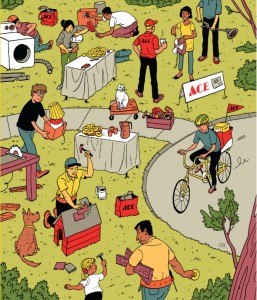 Through open-source collaboration people can construct more detailed (and accurate) reports of ongoing events than can ever come from slanted mainstream media journalists who are beholden to corporate interests. Through complementary currencies, LETS programs, crypto-currencies, barter exchanges, peer-to-peer lending and other means, both high-tech and low-tech, people can carry on economic transactions even when national (or regional) currencies fail. People are finding economic, social and other forms of support throughgrassroots community organizations that deliver the type of aid that national governments are incapable of providing. Collaborative learning and internet technologies have enabled a flowering of auto-didacticism that is rendering traditional government-sponsored and highly centralized and authoritarian forms of education all but obsolete.
Through open-source collaboration people can construct more detailed (and accurate) reports of ongoing events than can ever come from slanted mainstream media journalists who are beholden to corporate interests. Through complementary currencies, LETS programs, crypto-currencies, barter exchanges, peer-to-peer lending and other means, both high-tech and low-tech, people can carry on economic transactions even when national (or regional) currencies fail. People are finding economic, social and other forms of support throughgrassroots community organizations that deliver the type of aid that national governments are incapable of providing. Collaborative learning and internet technologies have enabled a flowering of auto-didacticism that is rendering traditional government-sponsored and highly centralized and authoritarian forms of education all but obsolete.
In short, there is a revolution that is happening all around us, even as we speak. It does not require guns or bombs or pitchforks or protests, only participation. And it is threatening to turn the ideology of statism and its associated forms of centralization on its head, and international mafias like the IMF/World Bank and the BRICS along with it. The only question is whether we are discerning enough to perceive it, wise enough to understand it, and brave enough to see it through to its completion.
Filed in: Articles

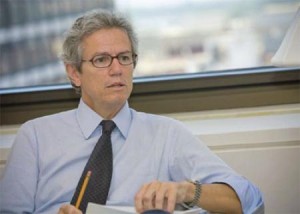

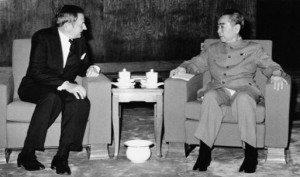

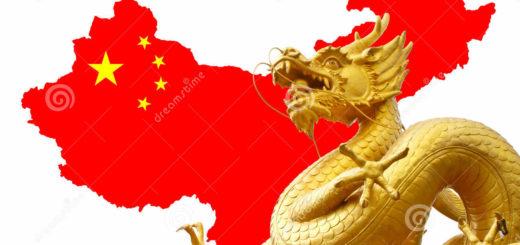


 Who Is Controlling RFK Jr.? | Candace Owens
Who Is Controlling RFK Jr.? | Candace Owens